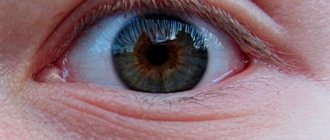Perhaps this question can be found on any forum for mothers. And the vast majority of women do not like the fact that their child, when falling asleep (and most often this habit manifests itself precisely at the moment of laying down), twirls their curls on his finger, picks, pulls or even pulls out hairs. It's annoying and painful in the end! The baby definitely needs to rub his mother’s hair to calm down. Moreover, if you take away what you need from a toddler, he begins to be capricious, angry and resorts to any tricks in an attempt to get to the hair.
The habit of twirling your hair on your finger: psychology
Behavioral habits are associated both with a person’s character and with folk signs. The harmless habit of twirling your hair on your finger is often interpreted as sentimentality, suspiciousness and lack of self-confidence.
Popular beliefs associate the habit of twisting one's hair with certain events:
- Constantly twirling your hair around your finger can cause severe headaches.
- Consciously twirling curls on your finger leads to a series of troubles.
- Using a comb to twirl your hair leads to migraines.
- The habit of contact with hair begins in childhood. Thanks to similar reflex movements, children try to calm down and protect themselves from the outside world.
- Falling asleep for a long time can also form the habit of twirling your hair on your finger. In the absence of serious psychological ailments, such features fade into the background as a person grows older.
Twisting your hair
Let's look at several reasons for developing the habit of twisting your hair:
- As a means of calming. The lack of contact with a loved one is replaced by various relaxation methods.
- Sleep aid. When parents stop rocking their baby to sleep, he begins to look for alternative methods for REM sleep.
- A way to distract yourself. Hopelessness in stressful situations finds a way out in certain habits.
- A way to protect yourself. Following his own fears, the child impulsively performs certain actions. Curling your hair reduces the feeling of danger.
Causes
Psychology believes that a child pulls his hair for a reason. The baby lulls himself to sleep in this way. This simple action calms the child and helps him fall asleep quickly. With age, the habit may disappear. Sometimes the problem gets worse.
Causes of bad habit:
- Lack of tenderness and love. A girl needs her mother's attention. She needs gentle touches, hugs, and other manifestations of maternal love. When a child feels a deficiency in this, he begins not only to pull his hair, but also to move the curl along his neck, cheek, and face. This is reminiscent of light touches and calms the girl.
- Distraction from problems. Rhythmic action allows you to forget about the problem for a while. Stroking your hair and massaging your scalp are harmless actions that help quickly relieve stress.
- Feeling of defenselessness. The child feels fear and does not feel safe. If you pull your curls, you can get rid of this obsessive, frightening feeling.
- Skin diseases. The child does not just touch his hair, but scratches his scalp vigorously. Then you should urgently contact a dermatologist or trichologist.
The habit of twirling hair on a finger in preschool children
- Young children develop the habit of twirling their hair on their fingers as a means of self-soothing from external stimuli. This feature does not pose a threat to health, but should attract the attention of caring parents.
- If a child twirls his hair on his finger to relieve tension, then parents can offer an alternative method of relaxation.
- It is not always possible to find out what is bothering a small child through conversation. The task of parents is to organize an interesting pastime that allows them to give vent to accumulated emotions.
- You can relax your baby through joint drawing or handicrafts, dancing or singing, active or role-playing games.
Children
Let's consider several suitable options:
- Distract your child's attention with a new toy.
- Play games to develop fine motor skills - puzzles, construction sets, plasticine, beads, etc.
- Play finger games, massage your hands.
- Leave your child alone as little as possible.
- Help your child fall asleep with books or lullabies.
You cannot put pressure on a child or point out his shortcomings. The baby should feel comfortable next to you. If the child makes contact, then you need to try to carefully ask about what is bothering him. Sometimes a new haircut or thoughtful hairstyle can help minimize frequent contact with hair.
- If you associate a child’s hair curling with a mental disorder, then you need to seek qualified help from a neurologist or psychologist.
- In an individual conversation, a specialist will help to find out the cause of such manifestations and connect them with the patient’s emotional background and his bodily sensations.
- Any therapy should be gentle and unobtrusive. It is inappropriate to focus attention on this problem and use physical force to eliminate it.
Reasons why a child pulls his mother's hair.
Every mother tries to understand the baby's motives. Psychologists name the following options: - the child lacks parental attention and tactile proximity; - the little one is worried about something; - he thinks that in this way he secures ownership of his mother. However, there is a more innate explanation for such behavior at the level of innate instincts: all primate cubs grab onto the female’s fur and thus move, warm up or avoid danger. There is an experiment describing the actions of a small monkey raised without parents. She is placed in a room with two “foster” mothers: one soft, but useless, and the other metal, but with milk or some other functions. Various situations are simulated, but their outcome is the same. Each time, having had enough, the baby ran to his woolen mother and spent time with her. The monkey would rush to her first in an unusual or frightening environment. Thus, tens of thousands of years have passed, women have long been deprived of hair, and the instinct of our children still provokes them to grab onto the existing hair.
The habit of twirling hair on a finger among teenagers
- For growing children, the habit of twirling their hair on their fingers can have two meanings. Obsessive contact with hair may indicate a mental disorder. In this case, you cannot do without the help of a psychotherapist.
- Timely attention to this problem will help to avoid serious consequences in the future.
- During the process of physiological changes, adolescents find it difficult to accept some changes. Constant contact with hair is a reflection of childhood insecurity, complexes, and a critical attitude towards one’s appearance.
Teenagers
- Such manifestations can be minimized with the help of handicraft sections or sports clubs. An active daily routine will leave no time for unnecessary thoughts. The daily routine relieves excess stress and stimulates the nervous system to overcome ailments.
- Girls can use twirling their hair around their fingers as a way to flirt with the opposite sex. With such gestures they try to attract additional attention and add mystery to their image.
The habit of twirling hair on a finger in adults
- An adult is much more likely to encounter unforeseen situations and is subject to stress and anxiety. Beneath the outer shell of an adult often hides an insecure child who requires parental care.
- A busy work schedule can also lead to similar habits. Focus and concentration on the work process is accompanied by involuntary movements. If hair curling takes the form of an obsessive action, then you can use several methods to eradicate it.
- Try changing your haircut. You can’t curl short hair, which means the habit will gradually fade away.
Change your hairstyle
- If you want to keep your hair long, make it a rule to put it in a bun. The absence of hanging strands will wean you from your usual actions.
- Analyze the negative effects of constant hair curling. Ask the opinions of others to see if they associate you with hair curling. See if the quality of hair growth has changed in areas you frequently come into contact with.
- The daily habit of twisting your hair on your finger leads to increased tension in the hair follicles. The result is fragility and hair loss. If the habit accompanies a person from infancy to adulthood, then bald patches may form on the head.
On your finger
To help a child get rid of such a habit, you need to actively participate in his life. The absence of changes in behavior is a reason to visit a psychologist.
What do experienced parents advise?
If you are unable to solve the problem on your own, then you can listen to the advice of experienced parents who have already encountered this issue and successfully resolved it. Quite a lot of people are discussing this topic on various forums. You can register on them and receive answers to your questions or various comments.
Daria, mother of a five-month-old daughter: “At such moments, I grab my daughter’s hand and say: I need to stroke dad (or another family member), and stroke her hair or face with my hand. She stops beating and tugging and tries to stroke her. Then he generally loses interest in this process for some time. This is how we cope for now. I haven’t been able to wean myself off completely yet.”
Natalya, mother of a daughter and son: “Many children have such periods, in order for it to pass, you need to try to wean it off now. Try active listening. As soon as he starts pulling your hair, take your hands, pull your hair out, put it in front of you and, looking into your eyes, talk, like, why are you doing this to your mom? Is this how you play? I understand, but hair is not a toy. You also have hairs, and if you pull them, it hurts very much. Offer an alternative, for example, show that hair needs to be ironed. And every time he does this again, sit him down and remind him that this is not a toy, that it hurts, and show him how to act. The result will not be visible immediately, but after some time, weeks or even months may pass, but it will definitely be there.”
Larisa, mother of her son: “My child not only pulls them, but also twists them around his finger, grabs them in his fist and begins to pull sharply, and then bites them. It hurts like hell. I did everything I could, quietly hitting his hands and pulling in response. It was all to no avail, no matter how I weaned him off, he just wanted and kept pulling. At the end I reached the point of a nervous breakdown, since nothing helped. I didn’t bother during the day, but as soon as I went to bed, this started happening. As soon as my son grew up, he stopped pulling my hair like that, and I explained that it hurt my mother. Then now, when he really wants to, he sometimes asks, “Mom, can I touch your hair.” I give, and he gently and affectionately, just like a kitten would burrow into them. He loves them very much, it’s a thrill for both him and me.”
Elizaveta, 1st child, 5 years old: “I endured several times when my daughter pulled my hair, then I pulled her a couple of times, pulled her hard, so that my daughter would also feel that I was in pain too. She cried, but I didn’t feel sorry for her, I said that it was painful and unpleasant for me too. Since then, when it was cut off, it has not come into my hair at all, and until now we have never had such a problem. Otherwise I follow the same principle, it helps the first time.”
Anna, mother of three children: “I just put my hair in a bun, it doesn’t go anywhere and doesn’t interfere with me playing with the kids. I have a lot of hair and it is quite long. I already understood this earlier, that there is no need to create a problem out of this, but simply prevent it from arising. That’s why I didn’t have to wean my kids away from this habit.”
Young children very often manipulate their parents, some choose just such methods for this. After all, they don’t know how to speak yet, so they do what they can. Don't think that everything will go away on its own. Stopping your child from pulling your hair is not difficult. Learn to solve problems as they arise, and in the future it will be very easy for you to find a common language with your child.







